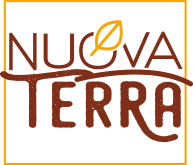The kelp, sea lettuce (Ulva Lactuca), belongs to the ulvaceae family, common in the Mediterranean and in cold or temperate seas. It is the green seaweed that is richest in chlorophyll. Because of its properties, it is suggested for the optimal supply of important micronutrients into the daily diet, especially in vegan, vegetarian, and raw food diets.
It grows up to 30 centimeters [12 inches] in length, and has thin leaves of an intense bright green color. It is collected in the spring and fall, the seasons in which it presents its best color, reflecting the richness of nutrients.
It is widely used in Japan, Scandinavia, and Ireland, while in Italy it is part of the Venetian and Neapolitan culinary tradition (it is, in fact, used in making “sea zeppolelle,” a typical Neapolitan dish).
Perchè mangiarlo
Like all seaweeds, it is very rich in minerals and vitamins. In particular, it is characterized by the presence of vitamin C and calcium, both of which contribute to regular energy metabolism.
It also has a good amount of potassium, which facilitates the normal functioning of the nervous system.
It contains all 8 essential amino acids, and has a fair amount of the essential Omega-3 fatty acid.

It is used in regular salads made up of dressed raw vegetables or may be cooked to one's liking. At table, it is ideal in fortifying vegan and vegetarian diets. Delicate but intense in flavor, it is ideal in the composition of colorful salads, tasty side dishes, and in condiments.









 Indietro
Indietro











